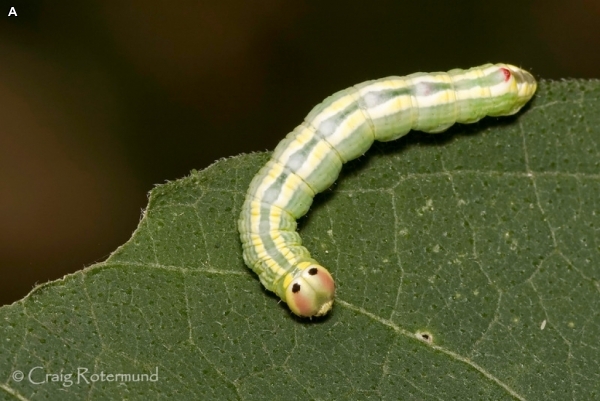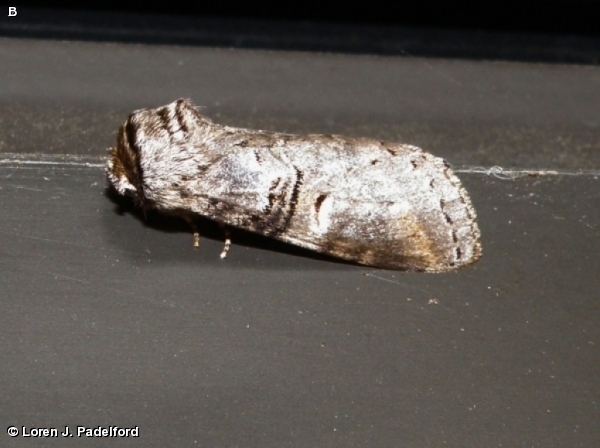
This caterpillar is highly variable in its coloration. But all have two black spots on their heads, simulating eyes. It grows to be about 1 1/2 inches long, with feint, green stripes running along the sides of its abdomen. The adult is a gray moth (not yet photographed).
The abundance in our area is not yet known. But since they feed on Basswood (American Linden) of which we have plenty in our two nature centers, this species should be common. The caterpillars have a habit of resting on the undersides of leaf blades with their heads curled back towards their abdomens.
The larval foodplants are ground cherry, horse-nettle, nightshade, tobacco, tomato and other members of the nightshade family (Solanaceae). In addition to leaves, they also eat green fruit, flowers and terminal shoots. The larva matures in about 20 days. These caterpillars are often parasitized by a braconid wasp (Cotesia congregata) that lays dozens of eggs inside of each larva. When mature, the wasp larva tunnels to the outside of the caterpillar’s body and spins a white cocoon on the surface (“Caterpillars of Eastern North America,” David L. Wagner).
Disclaimer: The content of NatureSearch is provided by dedicated volunteer Naturalists of Fontenelle Forest who strive to provide the most accurate information available. Contributors of the images retain their copyrights. The point of contact for this page is: Roland Barth.

